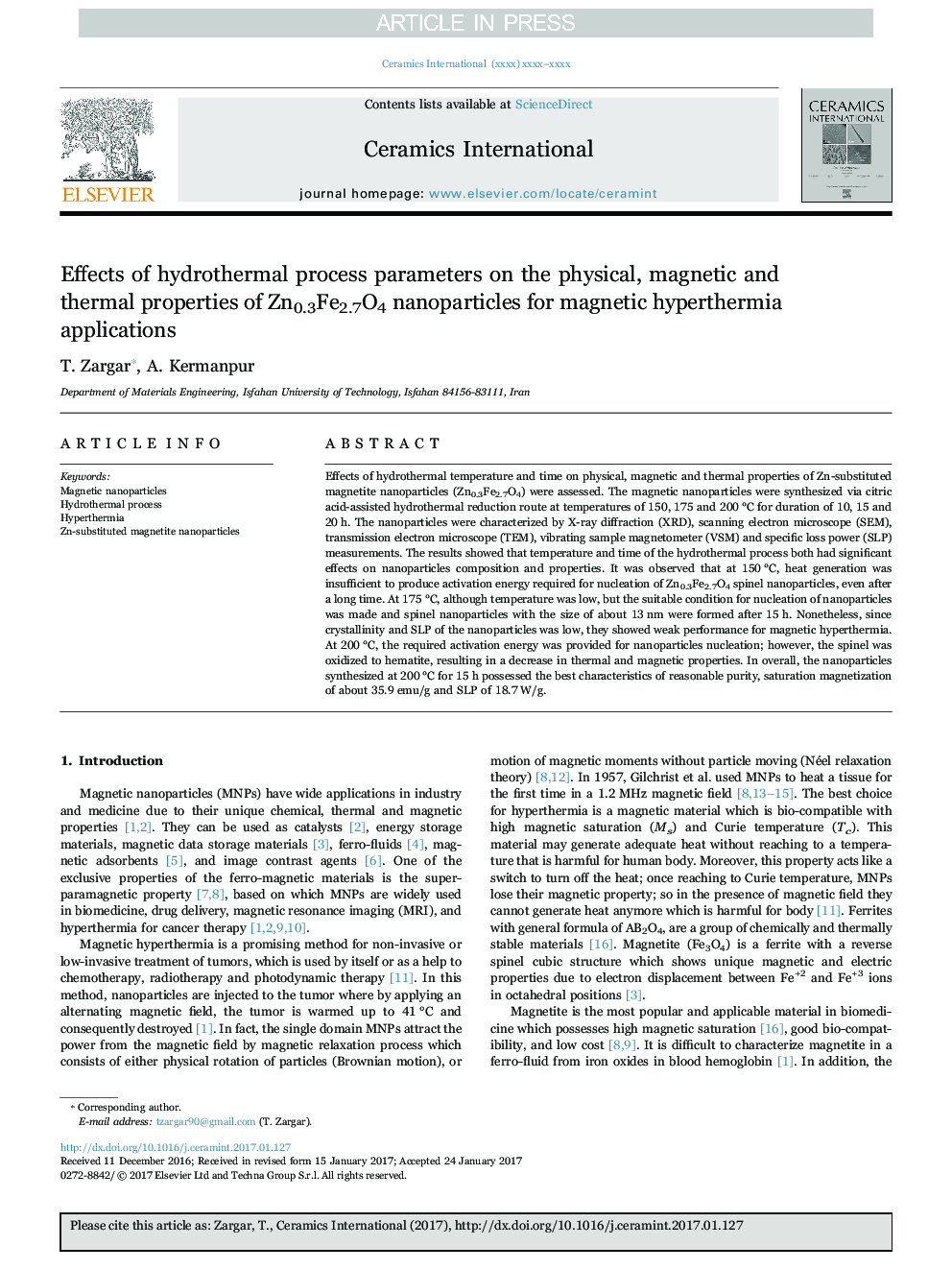| Article ID | Journal | Published Year | Pages | File Type |
|---|---|---|---|---|
| 5437595 | Ceramics International | 2017 | 11 Pages |
Abstract
Effects of hydrothermal temperature and time on physical, magnetic and thermal properties of Zn-substituted magnetite nanoparticles (Zn0.3Fe2.7O4) were assessed. The magnetic nanoparticles were synthesized via citric acid-assisted hydrothermal reduction route at temperatures of 150, 175 and 200 °C for duration of 10, 15 and 20 h. The nanoparticles were characterized by X-ray diffraction (XRD), scanning electron microscope (SEM), transmission electron microscope (TEM), vibrating sample magnetometer (VSM) and specific loss power (SLP) measurements. The results showed that temperature and time of the hydrothermal process both had significant effects on nanoparticles composition and properties. It was observed that at 150 °C, heat generation was insufficient to produce activation energy required for nucleation of Zn0.3Fe2.7O4 spinel nanoparticles, even after a long time. At 175 °C, although temperature was low, but the suitable condition for nucleation of nanoparticles was made and spinel nanoparticles with the size of about 13 nm were formed after 15 h. Nonetheless, since crystallinity and SLP of the nanoparticles was low, they showed weak performance for magnetic hyperthermia. At 200 °C, the required activation energy was provided for nanoparticles nucleation; however, the spinel was oxidized to hematite, resulting in a decrease in thermal and magnetic properties. In overall, the nanoparticles synthesized at 200 °C for 15 h possessed the best characteristics of reasonable purity, saturation magnetization of about 35.9 emu/g and SLP of 18.7 W/g.
Related Topics
Physical Sciences and Engineering
Materials Science
Ceramics and Composites
Authors
T. Zargar, A. Kermanpur,
